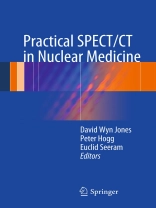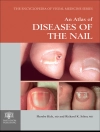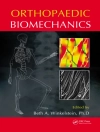Nuclear Medicine is a diagnostic modality which aims to image and in some cases quantify physiological processes in the body to highlight disease or injury. Within nuclear medicine, over the past few decades, major technological changes have occurred and concomitantly changes in the knowledge and skills required have had to evolve. One of the most significant technological changes has been the fusion of imaging technologies, to create hybrid systems such as SPECT/CT, PET/CT and PET/MR. With these changes in mind, Practical SPECT/CT in Nuclear Medicine provides a handy and informative guide to the purchase, clinical implementation and routine use of a SPECT/CT scanner. Practical SPECT/CT in Nuclear Medicine will be a valuable resource for all personnel working in nuclear medicine and it will be of particular value to trainees.
สารบัญ
SECTION 1 – Scientific Principles.- (Introduction): Overview of Molecular Imaging.- Basic Discussion on Electromagnetic radiation Part 1. Gamma Radiation in Relation to SPECT imaging.- Part 2. X-rays in relation to SPECT/CT systems.- Gamma Camera SPECT – Physical Principles, Basic Instrumentation and Quality Control.- CT Components available for use in SPECT/CT – Physical Principles, Instrumentation and Quality Control.- SECTION 2 – Selection and Design.- Selecting an appropriate SPECT/CT Scanner.- Design of a suitable facility to house a SPECT/CT scanner.- SECTION 3 - Clinical SPECT/CT.- Clinical Utility of SPECT-CT.- SECTION 4 - Radiation Protection.- Radiation Protection for SPECT/CT Systems.- Optimal Utilization of Imaging Parameters in CT Scanning.- S ECTION 5 – Imaging Principles.- Cross Sectional Anatomy in Multi-planar Imaging.- Radiological Contrast Media and Injector Systems.- Practical Considerations for Performing Clinical SPECT/CT.
เกี่ยวกับผู้แต่ง
David Wyn Jones, MSc DCR(R) DRI MSRP CRad P is a Superindendent Radiographer at Wrexham Maelor Hospital, North Wales, UK, and a Visiting Lecturer, Examiner and Supervisor at the University of Wales, Bangor, UK.
He is a member of the ARSAC (Administration of Radioactive Substances Advisory Committee) for the Department of Health (Governmental Health Department) in the UK.
Euclid Seeram, RTR BSc MSc FCAMRT is a full time faculty member of the British Columbia Institute of Technology (BCIT) and teaches in the Medical Radiography Diploma Program as well as in the Bachelor of Technology Degree Program in Medical Imaging. He worked as a radiologic technologist (radiographer) in both routine and special procedures radiography, and subsequently completed his Bachelor of Science (BSc) from Carleton University in Ottawa, Ontario
Professor Peter Hogg has a Chair in Radiography at the University of Salford and he is University lead for Diagnostic Imaging Research. He sits on several journal boards and is a member of several national / international scientific committees. He has first or co-authored many conference and journal papers
Euclid has published over 35 papers in professional radiologic technology journals and has had 16 textbooks published to date.
Currently he is a member of the editorial board for the Journal of Medical Imaging and Radiation Sciences, and a member of the Editorial Board for Radiography, an International Journal of Diagnostic Imaging and Radiation Therapy. Euclid also serves on the editorial board for the Biomedical Imaging and Intervention Journal based in Malaysia. Additionally he is the Editor-in-Chief for the Radiography Section of e-Health Professionals, and new online journal, and also serves as a peer reviewer for the Journal of Allied Health.












